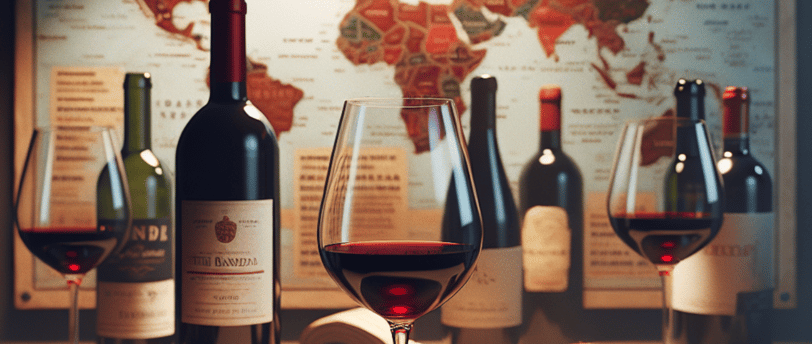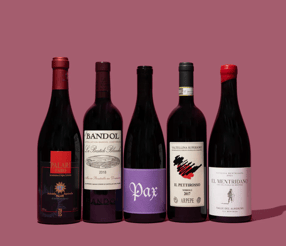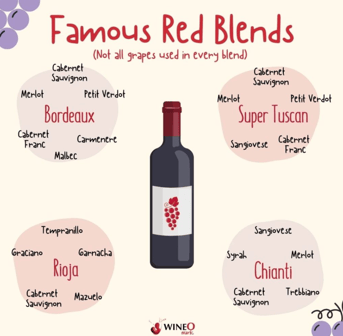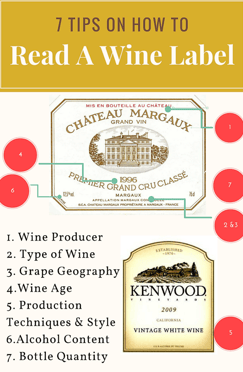The Secret to Finding Affordable Red Wines That Taste Like Luxury
Discover the secret to finding affordable red wines that deliver a luxurious taste. This post shares tips on exploring lesser-known regions, choosing blends, and looking for younger vintages to uncover hidden gems. Learn how to enjoy rich, full-bodied flavors without breaking the bank, proving that great taste doesn’t always come with a high price tag.
WINE TIPS
Otavio Marques
1/3/20255 min read


The pursuit of high-quality, affordable red wines has become an art form for oenophiles and casual drinkers alike, as the market continues to offer hidden gems that rival their more expensive counterparts. According to wine experts, the key to discovering these value-driven bottles lies in understanding regional variations, lesser-known producers, and emerging wine-making techniques that allow for premium quality at accessible price points.
Hidden Gems in Lesser-Known Regions
While renowned wine regions often command premium prices, savvy oenophiles are turning their attention to lesser-known areas for exceptional value and quality. These hidden gems offer a treasure trove of unique flavors and styles, often at more accessible price points.In Italy's Piedmont region, Ghemme DOCG stands out as an underappreciated alternative to the more famous Barolo and Barbaresco. Crafted primarily from Nebbiolo grapes, Ghemme wines exhibit delicate yet complex profiles that rival their more celebrated counterparts.
These wines often come at a fraction of the cost, making them an excellent choice for those seeking Piedmontese elegance without the hefty price tag.Venturing to the Southern Hemisphere, Chile's wine industry is producing remarkable reds that offer exceptional value. Chilean winemakers are leveraging their unique terroir and climate to create distinctive wines that challenge Old World perceptions. These wines typically require less aging and are generally more affordable, making them attractive options for budget-conscious wine enthusiasts.
The Languedoc region in southern France is another area gaining recognition for its excellent yet affordable wines. Once known primarily for bulk production, Languedoc has undergone a quality revolution. Winemakers in the region are now crafting sophisticated reds, often blending traditional varieties like Grenache, Syrah, and Mourvèdre to create wines that rival those from more prestigious French appellations.
In the United States, regions beyond Napa and Sonoma are emerging as sources of high-quality, value-driven wines. The Finger Lakes in New York and Texas Hill Country are producing noteworthy bottles that showcase their unique terroirs.
These areas benefit from lower land costs and less established reputations, allowing them to offer exceptional wines at more competitive prices.For those willing to explore, South Africa's Western Cape is a veritable playground of vinous discovery. The region's diverse microclimates and soils contribute to a wide range of wine styles, from bold Cabernet Sauvignons to elegant Chenin Blancs. Many Western Cape wines offer remarkable quality-to-price ratios, making them excellent choices for adventurous wine lovers.
By venturing beyond the beaten path and exploring these lesser-known regions, wine enthusiasts can uncover hidden gems that not only please the palate but also offer excellent value. These discoveries can lead to a more diverse and exciting wine experience, proving that great wine need not always come with a premium price tag.
Affordable Red Blends to Try
For wine enthusiasts seeking exceptional value without compromising on quality, red blends offer a tantalizing array of options. These wines, crafted by skillfully combining multiple grape varieties, often deliver complexity and balance at surprisingly affordable price points.One standout in this category is the McBride Sisters Collection Red Blend, which exemplifies the art of blending at an accessible price point.
This wine showcases the expertise of its creators in harmonizing different grape varieties to produce a well-balanced and flavorful wine that punches above its weight class.For those with a penchant for organic wines, the Domaine Bousquet Gaia Organic Red Blend presents an excellent choice.
This blend not only satisfies the palate but also appeals to environmentally conscious consumers, demonstrating that quality and sustainability can coexist in affordable wine options.Venturing into the realm of South American wines, Chilean red blends offer remarkable value. These wines benefit from the country's unique terroir and climate, resulting in distinctive flavor profiles that challenge Old World perceptions.
Chilean winemakers have honed their craft to produce wines that require less aging, translating to more affordable prices for consumers without sacrificing quality.In the United States, Washington State has emerged as a hotbed for excellent yet affordable red blends. These wines often combine traditional Bordeaux varieties with other grapes, resulting in unique flavor profiles that represent the region's terroir.
The success rate of these blends in terms of quality-to-price ratio makes them a favorite among wine enthusiasts looking for reliable "pizza night" options.For those willing to explore further, lesser-known wine regions often yield hidden gems. The Finger Lakes in New York, for instance, is producing noteworthy red blends that showcase the region's unique terroir.
These wines benefit from lower production costs and less established reputations, allowing wineries to offer high-quality blends at competitive prices.When searching for affordable red blends, don't overlook options from Southern France, particularly the Languedoc region. Once known primarily for bulk production, Languedoc has undergone a quality revolution, with winemakers now crafting sophisticated reds that often blend traditional varieties like Grenache, Syrah, and Mourvèdre.
These blends frequently offer exceptional value, rivaling wines from more prestigious French appellations at a fraction of the cost.By exploring these affordable red blends from diverse regions, wine enthusiasts can discover a world of flavor and complexity without straining their budgets. These wines not only provide excellent value but also offer an opportunity to expand one's palate and appreciation for the art of winemaking.
Tips for Reading Wine Labels
Understanding wine labels is crucial for making informed choices and discovering new favorites. While label designs can vary widely, certain key elements are consistently present and provide valuable information about the wine's characteristics and quality.The producer or brand name is typically prominently displayed on the label, often serving as a starting point for assessing the wine's quality.
Established producers with good reputations can be indicators of consistent quality, though this doesn't preclude excellent wines from lesser-known makers.The vintage, or year the grapes were harvested, is usually clearly stated on the label unless the wine is non-vintage.
Vintage can significantly impact a wine's flavor profile, as weather conditions vary year to year. Some regions or styles, like many Champagnes, intentionally produce non-vintage wines to maintain consistency.Geographic location, often referred to as appellation or sub-appellation, is a crucial piece of information on wine labels.
This indicates where the grapes were grown, which can greatly influence the wine's character due to variations in terroir. For example, a Cabernet Sauvignon from Napa Valley will likely have different characteristics than one from Bordeaux.The varietal, or grape variety, is commonly listed on New World wine labels.
Old World wines, particularly from France and Italy, often emphasize the region over the grape variety, as traditional regional blends are common. For instance, a Bordeaux blend typically contains Cabernet Sauvignon, Merlot, and other permitted varieties without specifying percentages.Alcohol content is typically displayed as a percentage of alcohol by volume (ABV).
This can provide insights into the wine's body and potential flavor intensity, with higher alcohol content often indicating a fuller-bodied wine.Terms like "Reserve" or "Grand Vin" may appear on labels, suggesting higher quality or longer aging.
However, these terms aren't strictly regulated in many regions, so their significance can vary between producers.For those with dietary concerns, labels often list additives such as sulfites.
This information is particularly important for individuals with sensitivities or allergies.Some labels may include tasting notes or food pairing suggestions, which can be helpful guides but shouldn't be considered definitive. Personal taste preferences and experimentation often lead to the most satisfying wine and food combinations.By familiarizing yourself with these key elements of wine labels, you can make more informed decisions when selecting wines, whether you're a novice or a seasoned enthusiast. Remember that while labels provide valuable information, the true test of a wine's quality and appeal ultimately lies in the tasting experience.






